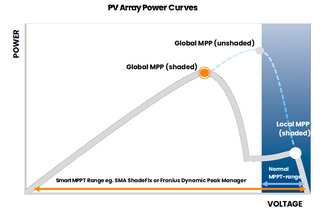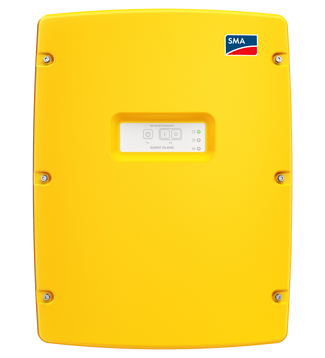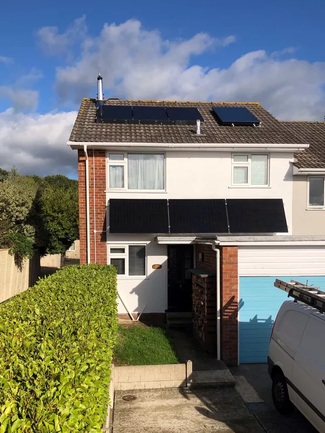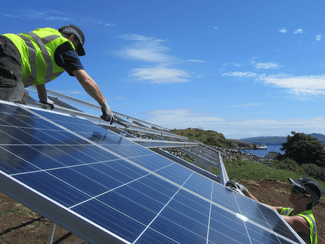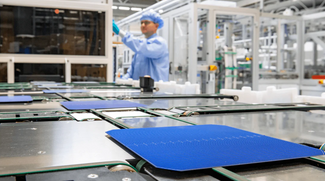These convert the DC power from photovoltaic (PV) modules directly into AC power to be fed into the grid. Storage batteries are not needed, as any power produced that is not consumed by the owner’s electrical loads is fed into the grid to be used elsewhere.
Due to the high voltages involved, these inverters should only be installed and serviced by qualified personnel.
String Inverters

Solar grid connect inverters are also called “string” inverters because the PV modules must be wired together in a series string to obtain the required DC input voltage, typically up to 600 VDC in residential systems and up to 1,000 VDC for commercial and industrial systems. String wiring is quick and easy to install, and the higher voltage helps to minimise cable losses and allow smaller wire size. However, in string wiring, maximum power point tracking (MPPT), along with any monitoring output, is performed at the string or array level.
Three-Phase Inverters are used in larger commercial grid-connect systems. These are available with power ratings from ~ 5- 100kW with input voltage ratings of 1,000 VDC which enables longer module strings.
Inverters automatically adjust PV array loading to provide maximum efficiency of solar panels by means of a maximal power point tracker (MPPT).
Units can be linked in parallel allowing extreme system design flexibility with the possibility of low cost system expansion and maximum system efficiency.
This makes the inverter ideal for use alone or as part of a large PV plant.


Optimised Inverters and Optimisers

Module Optimisers can be used, connected to each module to provide individual module-level MPPT tracking and monitoring, optimising the DC output that is connected to a string inverter for very high efficiency. Systems that combine optimisers with low-cost high-efficiency string inverters can simplify system design and maximize safety.


Hybrid Inverters

These are an all-in-one solution for solar energy supplies combining PV solar inverter and energy storage device in one unit. They can charge a battery using surplus energy for use in times of low generation and some can also supply backup power to protected loads during a grid outage. Some can be used with or without solar.


Inverter Sizing
This is usually done by using software packages provided by the inverter manufacturer. This is used to ensure that the PV array will operate within the inverter's input voltage range under varying conditions whilst being efficient and cost effective.
Normally the inverter is sized to be smaller than the peak output of the PV array. This is because the PV array will be operating for most of the time at below peak output and so increases efficiency, saves costs and can maximise annual generation by allowing a bigger PV system to be installed whilst still satisfying grid connection limits.
Due to the high voltages involved, these inverters should only be installed and serviced by qualified personnel
Products

String Inverters
These convert the DC power from photovoltaic (PV) panels directly into AC power to be fed into...
View collection
Optimised Inverters & Optimisers
These inverters are used in conjunction with Module Optimisers which are connected to each module to provide individual...
View collection
Hybrid Inverters
These are an all-in-one solution for solar energy supplies combining PV solar inverter and energy storage device in...
View collection